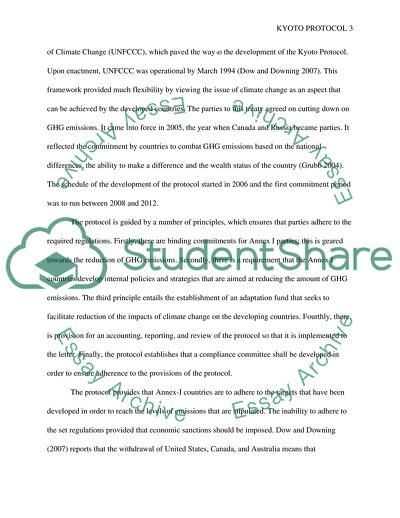Cite this document
(Strengths and Weaknesses of Kyoto Protocol in Solving Climate Change Term Paper - 1, n.d.)
Strengths and Weaknesses of Kyoto Protocol in Solving Climate Change Term Paper - 1. https://studentshare.org/environmental-studies/1819225-evaluate-the-strengths-and-weaknesses-of-x-for-solving-climate-change-where-x-is-an-actual-or-a-well-developed-proposed-solution-for-climate-change-mitigation-or-adaptation
Strengths and Weaknesses of Kyoto Protocol in Solving Climate Change Term Paper - 1. https://studentshare.org/environmental-studies/1819225-evaluate-the-strengths-and-weaknesses-of-x-for-solving-climate-change-where-x-is-an-actual-or-a-well-developed-proposed-solution-for-climate-change-mitigation-or-adaptation
(Strengths and Weaknesses of Kyoto Protocol in Solving Climate Change Term Paper - 1)
Strengths and Weaknesses of Kyoto Protocol in Solving Climate Change Term Paper - 1. https://studentshare.org/environmental-studies/1819225-evaluate-the-strengths-and-weaknesses-of-x-for-solving-climate-change-where-x-is-an-actual-or-a-well-developed-proposed-solution-for-climate-change-mitigation-or-adaptation.
Strengths and Weaknesses of Kyoto Protocol in Solving Climate Change Term Paper - 1. https://studentshare.org/environmental-studies/1819225-evaluate-the-strengths-and-weaknesses-of-x-for-solving-climate-change-where-x-is-an-actual-or-a-well-developed-proposed-solution-for-climate-change-mitigation-or-adaptation.
“Strengths and Weaknesses of Kyoto Protocol in Solving Climate Change Term Paper - 1”. https://studentshare.org/environmental-studies/1819225-evaluate-the-strengths-and-weaknesses-of-x-for-solving-climate-change-where-x-is-an-actual-or-a-well-developed-proposed-solution-for-climate-change-mitigation-or-adaptation.


